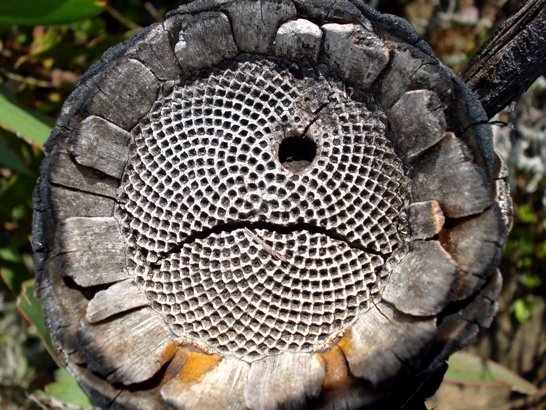Protea cynaroides, the mathematician

Author: Ivan Lätti
Photographer: Judd Kirkel Welwitch
Regular patterns occurring in plant shapes can often be mathematically represented by a whole number series in which every adjacent number pair added equals the next number.
This neat number and geometric phenomenon was first described in Europe by the twelfth century Italian mathematician Fibonacci, Leonardo of Pisa, or son of Bonacci, who was educated by the Moors in Algeria. The superior Hindu-Arab number system was soon after his work adopted in Europe, replacing the Roman numerals.
In the photo, several clockwise and anticlockwise spirals arise from around the centre in the pattern of holes in this partly burnt base of a Protea cynaroides flowerhead, its involucral receptacle.
Evidence of these patterns abounds in nature, to the extent that they have been described as nature’s numbering system. Seen in honeycomb, the scales on a pineapple, floret arrangement in many kinds of flowerheads, seashell shapes and bracts of pinecones… everywhere one looks growth patterns of living things can be described in Fibonacci number terms (Wikipedia; www.goldennumber.net).

